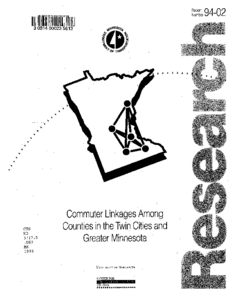St. Cloud Metropolitan Area Comprehensive Transportation and Planning Study: Study Design and Work Program
Creator
Date Created
1969
Description
Grand Forks-East Grand Forks Urban Area Transportation Study: Volume 6: Final Report
Date Created
1969
Description
Grand Forks-East Grand Forks Urban Area Transportation Study: Volume 5: Goals and Standards
Date Created
1969
Description
Grand Forks-East Grand Forks Urban Area Transportation Study: Volume 4: Population and Economic Characteristics
Date Created
1969
Report Number
Grand Forks-East Grand Forks Urban Area Transportation Study
Description
Grand Forks-East Grand Forks Urban Area Transportation Study: Volume 3: 1965 Traffic Characteristics
Date Created
1969
Description
Grand Forks-East Grand Forks Urban Area Transportation Study: Volume 2: 1965 Land Use
Date Created
1969
Description
Grand Forks-East Grand Forks Urban Area Transportation Study: Volume 1: 1965 Living Patterns and Attitudes
Date Created
1969
Description










